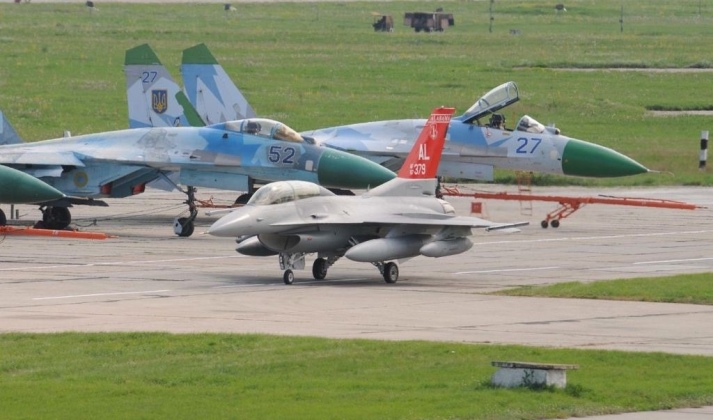Drone footage in the aftermath of a Russian missile strike on Ukraine’s Mirgorod Air Base, located 160 miles from the Russian-Ukrainian border, has confirmed the loss of four Su-27 Flanker fourth generation air superiority fighters. Two of the aircraft were destroyed, and two more seriously damaged. The attack was reportedly launched using the Iskander-M ballistic missile system, and marks one of the most serious blows to Ukrainian air power since the start of the war. Ukrainian pilots who have flown Su-27s and the incoming U.S.-built F-16s have reported that the former remains an overall more capable aircraft, although as they are few and far between in the inventories of Western aligned states the possibility of replenishing combat losses remains very slim. The Su-27 was designed to be capable of outperforming the F-16’s heavier counterpart the F-15 in air to air combat, and was widely considered the world’s leading air superiority fighter when the Cold War ended. Among its advantages over the F-16, and over the MiG-29s and Su-24s Ukraine currently fields, are its much longer range, far larger radar, higher weapons carrying capacity and high manoeuvrability at all speeds.
Commenting on the strike, Forbes reported that it “may have been one of the costliest single days for the battered Ukrainian air arm since Russia widened its war on Ukraine in February 2022,” highlighting that “Ukrainian bloggers rushed to blame the air force officers who ordered the Su-27 crews to park their jets out in the open at a base dangerously close to the front line.” Some sources even speculated that leaving the aircraft in a vulnerable position may have been intentional in order to increase pressure on Ukraine’s Western supporters to hasten deliveries of F-16s. Although the Su-27 needs significantly longer runways and more maintenance than the lighter MiG-29, compared to Western fighters such as the F-16 it is far better optimised to operating from makeshift airfields including those in less than pristine condition, which has been key to allowing the aircraft to keep flying. The attack on Mirgorod Air Base has raised the possibility that Russia could be seeking to deter the delivery of F-16 and Mirage 2000 fighters by European states by demonstrating the vulnerability of any facilities at which they may be based.

While the Su-27 forms the elite of the Ukrainian Air Force’s combat fleet, enhanced derivatives of the aircraft with 21st century avionics and composite materials notably also form the backbone of the Russian Air Force. Fighters such as the Su-30SM and Su-35 having left the Soviet built Ukrainian models at a significant disadvantage. This resulted in overwhelming losses for Su-27 units in the major air battles that characterised the war’s initial weeks. The Su-27 had nevertheless proven effective as a launch platform for cruise missiles, with a retrofitting of British Storm Shadow missiles onto the aircraft confirmed in May 2023 facilitating strikes deep into Russian held territory. The possibility has been raised that the United States could supply its own Su-27s to Ukraine, with the country having acquired examples from the country and from neighbouring Belarus in the 1990s to study their capabilities. Indications in both Washington and Kiev of a desire to transition Ukraine to fully operate NATO standard equipment may well reduce such possibilities.
